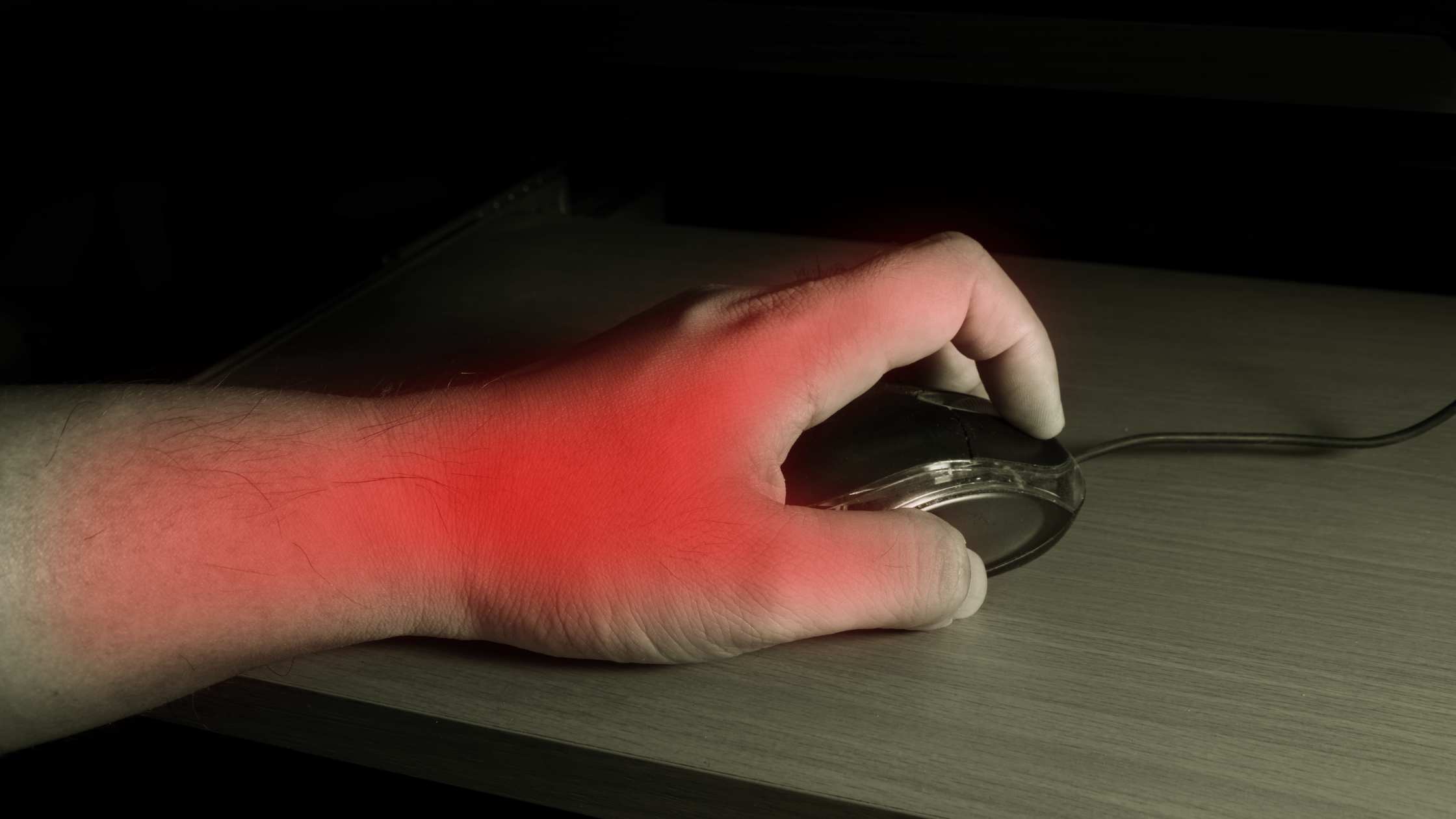Understand the Basics of Butterfly Clicking

If you want to master butterfly clicking, you need to understand the basics - and lucky for you, it's not as complicated as it may seem!
The first thing you need to know is the benefits of butterfly clicking. This technique allows you to click at a much faster rate than traditional clicking methods, which is especially useful for games that require rapid clicking. With butterfly clicking, you can double or even triple your clicking speed, giving you a major advantage over your opponents.
However, there are also common mistakes to avoid with butterfly clicking. One of the biggest mistakes is not finding the right grip and finger placement on your mouse. This can lead to lower clicking speeds and even discomfort or pain in your hand.
Additionally, it's important to practice in moderation and not push yourself too hard, as overuse of butterfly clicking can also cause hand strain. By understanding the benefits and avoiding common mistakes, you'll be well on your way to mastering butterfly clicking.
Choose the Right Mouse
Choosing the right mouse is essential for mastering the art of rapid clicking. When it comes to butterfly clicking, the sensitivity of the mouse plays a crucial role. You need to choose a mouse that allows you to adjust the sensitivity to your liking. This way, you can find the perfect setting that works best for you.
If the sensitivity is too low, you'll have a hard time generating enough clicks. On the other hand, if the sensitivity is too high, you may find it challenging to control the mouse.
Another important factor to consider is your grip style. The grip style you use can affect the comfort and accuracy of your clicks. There are three types of grip styles - palm grip, claw grip, and fingertip grip. Each grip style has its pros and cons, and you need to choose the one that suits you the most.
For butterfly clicking, the claw grip is the most recommended. This grip style allows you to have more control over the mouse, which is essential for generating rapid clicks.
Start Slowly
When starting to practice butterfly clicking, it's important to begin slowly and with intention. One key strategy for building this skill is to start with using just one finger on each hand.
This allows you to focus on your technique and gradually increase your speed over time. As you become more comfortable, you can begin to add more fingers and increase your clicking speed gradually.
By taking this patient approach, you'll be able to build strong clicking skills that will serve you well in your gaming endeavors.
Practice with One Finger
Now let's focus on practicing butterfly clicking with just one finger. While it may seem challenging at first, with consistent practice, you'll master it in no time. The benefits of butterfly clicking with one finger include increased speed and precision, as well as reducing the strain on your hand and wrist.
However, it's important to avoid common mistakes when practicing, such as using too much force and straining your muscles.
To start practicing with one finger, place your index or middle finger on the mouse button and gently start clicking. Focus on using a light touch and a quick flick of the finger. As you start to get comfortable with this technique, gradually increase the speed of your clicking.
You can also try using different fingers to find which one works best for you. Remember to take breaks and stretch your hand and wrist to avoid injury.
With consistent practice, you'll soon be able to butterfly click with ease and precision.
Increase the Speed Gradually
To improve your one-finger clicking, gradually ramp up your speed while keeping your finger relaxed and nimble. Timing techniques are essential to achieve maximum efficiency. It's not just about clicking as fast as possible, but also about clicking at the right time.
You need to find the right rhythm by practicing with a metronome or by counting in your head. Focus on hitting the mouse button precisely when it's time to click, without rushing or hesitating. Hand positioning is also crucial for mastering butterfly clicking.
You need to find the perfect angle and pressure to apply while clicking. Experiment with different hand positions until you find the one that works best for you. Keep in mind that your hand should be relaxed, and your fingers should be flexible enough to move quickly.
With practice, you'll be able to build up your speed without sacrificing accuracy, and you'll be able to butterfly click like a pro.
Do Finger Exercises
Before diving into butterfly clicking, it's important to do some finger exercises to prepare your muscles and prevent injury.
Start with some warm-up exercises, such as stretching your fingers and wrists, to get the blood flowing and loosen up any tension.
Then, move on to strengthening exercises, like squeezing a stress ball or using hand grips, to build up your finger muscles and improve endurance.
Incorporating these exercises into your practice routine can help you master butterfly clicking while minimizing the risk of strain or fatigue.
Warm-Up Exercises
Start your warm-up routine with some simple exercises to prepare your muscles for butterfly clicking. It's important to stretch first to prevent any muscle strain or injury.
You can start with some basic stretches like arm circles, wrist rotations, and shoulder shrugs. These stretches will help loosen up your muscles and joints, making it easier to perform butterfly clicking.
After stretching, it's a good idea to incorporate some cardiovascular exercise into your warm-up routine. This will increase your heart rate and blood flow, which will help your muscles receive more oxygen.
You can try jogging in place, jumping jacks, or even a few minutes of dancing. This will not only warm up your muscles, but also help you focus and feel energized for your butterfly clicking practice.
Remember, taking the time to properly warm up before practicing butterfly clicking can help prevent injury and improve your performance.
Strengthening Exercises
Now that you've warmed up, it's time to move on to strengthening exercises. These exercises are designed to improve your hand grip and finger dexterity, as well as increase your muscle endurance and hand agility. By doing them regularly, you'll be able to maintain a consistent and fast butterfly clicking speed.
One exercise you can do is finger push-ups. Place your fingertips on a flat surface and push down until your knuckles touch the surface. Then, lift your fingers back up and repeat. This exercise targets the muscles in your fingers and helps improve your finger dexterity.
Another exercise is gripping a stress ball or hand gripper, squeezing it for a few seconds, and then releasing. This exercise strengthens the muscles in your hand and improves your hand grip.
By incorporating these exercises into your practice routine, you'll see improvements in your butterfly clicking speed and consistency.
Practice Regularly
Consistently practicing butterfly clicking can help you improve your skills and feel more confident in your abilities. It's important to practice regularly to build muscle memory and develop the necessary coordination needed for butterfly clicking.
However, it's equally important to take breaks and rest in between sessions to avoid wrist strain and injury.
When practicing, it's common to make mistakes such as using too much force or clicking too quickly. To avoid these mistakes, start by focusing on the correct technique and gradually increasing speed. It may also be helpful to practice with a metronome or timer to maintain a consistent rhythm.
Remember, the key to mastering butterfly clicking is patience and persistence. By practicing regularly and avoiding common mistakes, you'll be well on your way to becoming a skilled butterfly clicker.
Recap
Congratulations! You've learned the basics of butterfly clicking and you're well on your way to mastering this advanced clicking technique.
Remember, the key to success is to choose the right mouse, start slowly, do finger exercises, and practice regularly.
As you continue to practice, you may encounter some challenges along the way. Don't get discouraged - these are common obstacles that can be overcome with perseverance and dedication.
By following these tips and putting in the time and effort, you can develop the skills needed to become a proficient butterfly clicker.
So keep practicing and before you know it, you'll be clicking like a pro!





